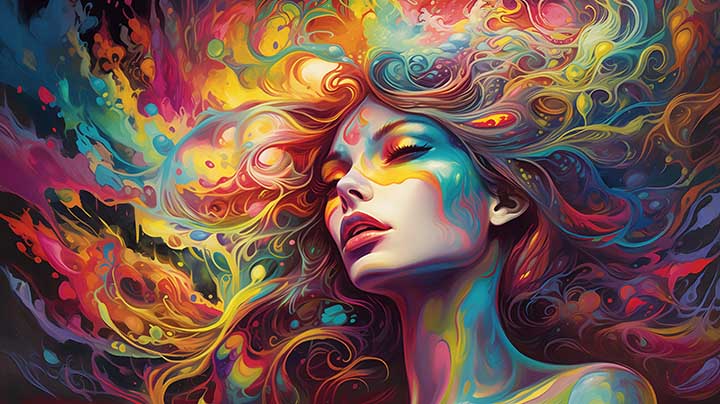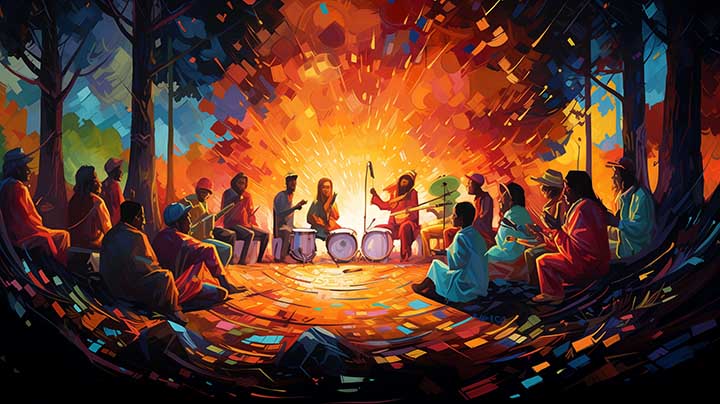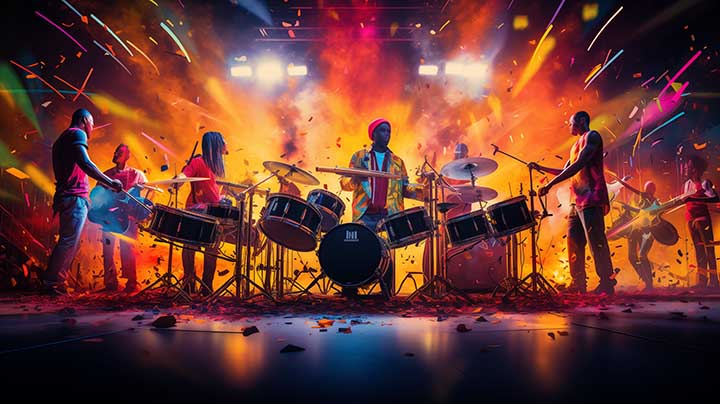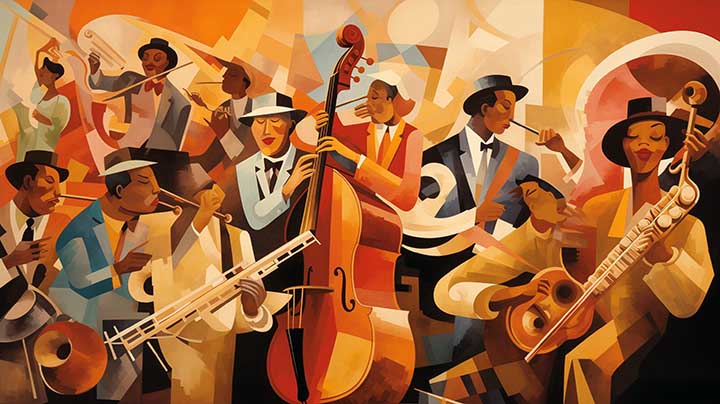The emergence of psychedelic music in the 1960s marked a significant shift in the musical landscape and cultural zeitgeist. Rooted in the counterculture movement of the time, psychedelic music challenged traditional notions of sound, lyrics, and performance, and became a powerful tool for self-expression, social commentary, and exploration of altered states of consciousness. In this article, we will explore the origins, characteristics, and impact of psychedelic music, as well as its enduring legacy in contemporary music.
The term “psychedelic” was coined by British psychiatrist Humphry Osmond in 1957, derived from the Greek words “psyche” (mind) and “delos” (manifest). It was used to describe the mind-altering effects of hallucinogenic substances such as LSD (lysergic acid diethylamide) and psilocybin mushrooms, which were becoming increasingly popular among artists, intellectuals, and spiritual seekers. These substances were believed to expand consciousness, dissolve ego boundaries, and provide access to mystical and transcendent experiences.
The influence of psychedelics on music can be traced back to the early 1960s, when a wave of experimentation and cultural revolution was sweeping through Western society. Musicians, inspired by the mind-expanding effects of psychedelic substances, began to incorporate these experiences into their music. The result was a new genre of music that defied conventional structures and embraced sonic exploration, improvisation, and a sense of otherworldliness.
One of the earliest examples of psychedelic music can be found in the work of American folk singer-songwriter Bob Dylan. In the mid-1960s, Dylan began experimenting with electric instruments and incorporating surreal and abstract lyrics into his songs. Albums such as “Bringing It All Back Home” (1965) and “Highway 61 Revisited” (1965) showcased Dylan’s transition from acoustic folk to a more electric and psychedelic sound.
Another key figure in the emergence of psychedelic music was the American rock band The Byrds. Their 1966 single “Eight Miles High” is often cited as one of the first psychedelic rock songs. With its jangling guitars, intricate harmonies, and abstract lyrics, the song captured the essence of the psychedelic experience and set the stage for the genre’s future development.
The year 1967, often referred to as the “Summer of Love,” marked a turning point in the popularity and cultural impact of psychedelic music. The release of albums such as The Beatles’ “Sgt. Pepper’s Lonely Hearts Club Band,” The Jimi Hendrix Experience’s “Are You Experienced,” and Pink Floyd’s “The Piper at the Gates of Dawn” showcased the full potential of psychedelic music. These albums pushed the boundaries of studio production, incorporating innovative recording techniques, experimental sounds, and unconventional song structures.
Characterized by swirling guitars, hypnotic rhythms, and ethereal vocals, psychedelic music aimed to create a sonic landscape that mirrored the psychedelic experience. The use of effects such as reverb, echo, and distortion became common, creating a sense of space and otherworldliness. Lyrics often explored themes of spirituality, consciousness expansion, and social and political commentary. The music was meant to transport listeners to a different realm, inviting them to question societal norms and embrace a more liberated and open-minded perspective.
Psychedelic music also had a profound impact on the live music experience. Bands such as The Grateful Dead and Jefferson Airplane embraced improvisation and extended jam sessions, allowing for a more immersive and communal experience. Concerts became a space for collective exploration, where audience members and musicians alike could connect on a deeper level and transcend the boundaries of everyday reality.
The cultural impact of psychedelic music extended beyond the music itself. It became intertwined with the broader counterculture movement of the 1960s, which sought to challenge societal norms, promote peace and love, and advocate for social justice. Psychedelic music became a soundtrack for the anti-establishment sentiment of the time, with songs such as The Rolling Stones’ “Street Fighting Man” and Jefferson Airplane’s “Volunteers” serving as anthems for the protest movement.
However, the popularity of psychedelic music was not without controversy. As the counterculture movement gained momentum, so did the backlash from conservative elements of society. The use of drugs, both by musicians and their audiences, became a focal point of criticism and moral panic. The criminalization of psychedelic substances and the increasing association of the genre with drug culture led to a decline in mainstream popularity by the late 1960s.
Despite its relatively short-lived mainstream success, the impact of psychedelic music on popular culture and subsequent musical genres cannot be overstated. Many of the techniques and sounds pioneered by psychedelic musicians continue to influence artists across a wide range of genres, from rock and pop to electronic and experimental music.
In the 1980s and 1990s, the resurgence of psychedelic music can be seen in the emergence of genres such as neo-psychedelia and shoegaze. Bands like The Stone Roses, The Brian Jonestown Massacre, and My Bloody Valentine drew inspiration from the psychedelic sounds of the 1960s and incorporated them into their own unique sonic landscapes.
In recent years, psychedelic music has experienced a revival, with a new generation of artists embracing its experimental and mind-expanding qualities. Bands such as Tame Impala, Unknown Mortal Orchestra, and King Gizzard & The Lizard Wizard have gained popularity for their modern take on psychedelic rock, incorporating elements of electronic music, funk, and indie rock.
The enduring legacy of psychedelic music lies in its ability to challenge conventions, push boundaries, and provide a platform for self-expression and exploration. It continues to inspire artists and listeners alike to question the status quo, embrace individuality, and seek new ways of experiencing and understanding the world.
The emergence of psychedelic music in the 1960s marked a significant cultural and musical shift. Rooted in the counterculture movement of the time, psychedelic music challenged traditional notions of sound, lyrics, and performance, and became a powerful tool for self-expression, social commentary, and exploration of altered states of consciousness. Characterized by its experimental sounds, abstract lyrics, and mind-expanding qualities, psychedelic music created a sonic landscape that mirrored the psychedelic experience. Although its mainstream popularity was relatively short-lived, the impact of psychedelic music on popular culture and subsequent musical genres is undeniable. Its influence can be heard in the work of artists across a wide range of genres, and its enduring legacy continues to inspire and captivate audiences to this day.





